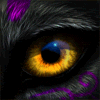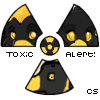The Lequard Court - 2 Free Christmas Raffles
25 posts
• Page 1 of 3 • 1, 2, 3
The Lequard Court - 2 Free Christmas Raffles
Last edited by Cerestes on Fri Dec 09, 2016 5:37 pm, edited 19 times in total.
-

Cerestes - Posts: 5815
- Joined: Tue Dec 08, 2009 3:18 am
- My pets
- My items
- My wishlist
- My gallery
- My scenes
- My dressups
- Trade with me
About the Species
What is a Lequard?
Lequards are one of the most common animals found on the planet Astaria (As-tear-ee-uh). They are large canines with muscular, feline-like bodies. Males sport a mane of feathers around their neck and at the base of their tails and the slightly smaller females have a few feathers as well. Lequard translates to "Liquid Leopard" in their own language, as they are able to change their genders and their appearance to suit their personal tastes. Lequards can live in any climate type and are known to live off of anything from sweets to a pure vegetarian or carnivorous diet.

BASIC INFO
Lequards are one of the most common animals found on the planet Astaria (As-tear-ee-uh).
They are large canines with muscular, feline-like bodies. Males sport a mane of feathers around their
necks and at the base of their tails and the slightly smaller females have a few feathers as well.
Lequard translates to "Liquid Leopard" in their own language, as they are able to change their genders and
their appearance to suit their personal tastes.
Their feathers and hair are very shiny, like synthetic wig hair. Iridescent coloring is very common, as well as the
possession of black sclera (eye whites).
Lequards have short, thick limbs and a dense body mass. They have thick, shaggy fur as well.
HABITAT
Lequards can adapt to any environment, and some maintain a preference for the duration of their life. Those who live in colder climates tend to have longer, fluffier fur than their tropical cousins.
LIVING ARRANGEMENTS
A group of Lequards is called a Court. The Court will consist of the King and Queen, their next-in-lines, and the common pack members. A pack may contain anywhere from 3 to 20 pack members. Some packs are known to keep a member known as the Jester, who is treated just as his title implies.
SIZE AND WEIGHT
Male lequards grow to about the size of leopards, and the females are a bit smaller. They may weight as much as 200 pounds.
AGES/MATURITY
Lequards reach adulthood at around a year of age and tend to stay with the Court they were born into until about 2 years of age.
They will then either start a new court with a mate or strike out on their own until they find a mate or join another Court.
Lequards live for about a century, and reach old age at around 70 - 80 years.
REPRODUCTION
Lequards do not need to be mated to be bred.
Lequards may produce offspring between any genders.
Only TWO Lequards may be bred together.
Litters include anywhere from 1 - 3 Kits.
DIET
Lequards will eat anything they deem tasty. Some prefer strictly meat diets, while others stick to veggies, and some even live off on nothing but sugar.
GENETICS
The standard Lequard has the body and head of a canine, the legs and tail of a snow leopard, a mane (thick or thin) made of feathers, as well as feathers either growing along or at the base of the tail.
In rare cases, a Lequard will also be born with a pair of wings.
NO Lequard is able to fly due to dense bone and muscle mass.


Last edited by Cerestes on Fri Dec 09, 2016 5:24 pm, edited 2 times in total.
-

Cerestes - Posts: 5815
- Joined: Tue Dec 08, 2009 3:18 am
- My pets
- My items
- My wishlist
- My gallery
- My scenes
- My dressups
- Trade with me
Species Rules
*General Rules*
-You do not have to own a Lequard to join the group.
-Do not use characters that do not belong to you without permission.
-Please respect all decisions made by mods and be kind to all.
-No drama. Any issues should be brought to Cerestes.
*Adoption Rules*
-I will never repossess a Lequard once it is adopted.
HOWEVER, the breaking of rules may ban you from the group and
you will not be allowed to participate in any official species events.
-You may own as many Lequards as you wish.
-You may make changes to your Lequard's colors and design, but you
may NOT change any of it's rarities. Ex. It has black ram horns. You
can change the color but they must remain ram horns.
-You MAY change the accessories from those acquired when adopting,
but the original ref will retain those items at the artists' discretion.
*Trading and Selling*
-Please not sell a character for more than you got it for unless it comes
with extra art!
If you have any questions, please note Cerestes
-You do not have to own a Lequard to join the group.
-Do not use characters that do not belong to you without permission.
-Please respect all decisions made by mods and be kind to all.
-No drama. Any issues should be brought to Cerestes.
*Adoption Rules*
-I will never repossess a Lequard once it is adopted.
HOWEVER, the breaking of rules may ban you from the group and
you will not be allowed to participate in any official species events.
-You may own as many Lequards as you wish.
-You may make changes to your Lequard's colors and design, but you
may NOT change any of it's rarities. Ex. It has black ram horns. You
can change the color but they must remain ram horns.
-You MAY change the accessories from those acquired when adopting,
but the original ref will retain those items at the artists' discretion.
*Trading and Selling*
-Please not sell a character for more than you got it for unless it comes
with extra art!
If you have any questions, please note Cerestes
Last edited by Cerestes on Fri Dec 09, 2016 5:31 pm, edited 2 times in total.
-

Cerestes - Posts: 5815
- Joined: Tue Dec 08, 2009 3:18 am
- My pets
- My items
- My wishlist
- My gallery
- My scenes
- My dressups
- Trade with me
Open Designs
Last edited by Cerestes on Fri Dec 09, 2016 5:30 pm, edited 1 time in total.
-

Cerestes - Posts: 5815
- Joined: Tue Dec 08, 2009 3:18 am
- My pets
- My items
- My wishlist
- My gallery
- My scenes
- My dressups
- Trade with me
-

wyrdwurm - Posts: 2861
- Joined: Sat Mar 16, 2013 7:26 pm
- My pets
- My items
- My wishlist
- My gallery
- My scenes
- My dressups
- Trade with me
Re: The Lequard Court - Posting Welcome!
I want one of these so bad, so mark!<3
-

rottenmutt - Posts: 15865
- Joined: Sat Dec 29, 2012 4:34 pm
- My pets
- My items
- My wishlist
- My gallery
- My scenes
- My dressups
- Trade with me
-

Cerestes - Posts: 5815
- Joined: Tue Dec 08, 2009 3:18 am
- My pets
- My items
- My wishlist
- My gallery
- My scenes
- My dressups
- Trade with me
-

Cerestes - Posts: 5815
- Joined: Tue Dec 08, 2009 3:18 am
- My pets
- My items
- My wishlist
- My gallery
- My scenes
- My dressups
- Trade with me
-

Cerestes - Posts: 5815
- Joined: Tue Dec 08, 2009 3:18 am
- My pets
- My items
- My wishlist
- My gallery
- My scenes
- My dressups
- Trade with me
Re: The Lequard Court - Posting Welcome!
He's so handsome Cer omg <3
Avatar Lines by Bakuba
Chloe born June 2nd 2015!
Anastasia born April 23 2019!
Monroe born September 28 2023!
Beckett born November 13th 2024!
My birthday is Feb 9th!
Chloe born June 2nd 2015!
Anastasia born April 23 2019!
Monroe born September 28 2023!
Beckett born November 13th 2024!
My birthday is Feb 9th!
-

DrinaLestrange - Posts: 12504
- Joined: Thu Jan 12, 2012 1:29 pm
- My pets
- My items
- My wishlist
- My gallery
- My scenes
- My dressups
- Trade with me
25 posts
• Page 1 of 3 • 1, 2, 3
Who is online
Users browsing this forum: No registered users and 7 guests












